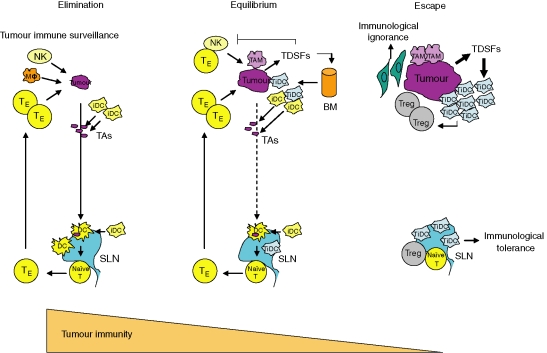Figure 1.
A schematic process for understanding cancer immunoediting from immune surveillance to escape. When nascent transformed cells existed, these cells were easily eradicated by innate and adaptive immune responses. During tumour growth, tumour cells are required for angiogenesis and stromal remodelling, which produce tumour cell variants that have low immunogenicity and are resistant to immune attack, and proceed to the equilibrium phase even though the elimination phase continues through immune selection pressure. Tumour progression leads to the release of tumour-derived soluble factors that are involved in several mechanisms of immune evasion in the escape phase. iDC, immature dendritic cell; Mφ, macrophage; NK, natural killer; TE, effector T cell; TAs, tumour antigens; SLN, sentinel lymph node; TiDC, tumour-associated iDC; TAM, tumour-associated macrophage; TDSFs, tumour-derived soluble factors; Tregs, regulatory T cells; BM, bone marrow.

